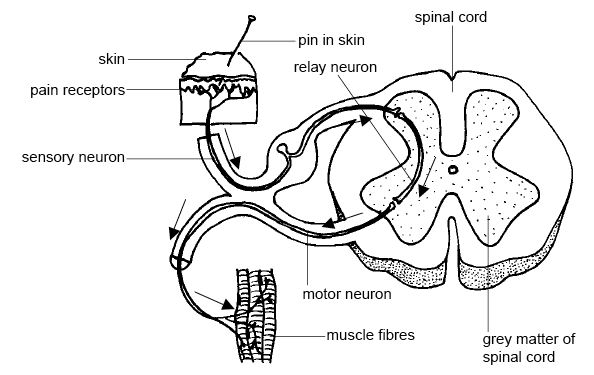Neuron
The neuron is the anatomical and physiological unit of the nervous system. Although they can have different shapes, the typical neuron is a star-shaped cell in which it is distinguished:
- The neuronal body, soma or perikaryon. It contains the cell nucleus.
- Two types of branches:
- A long branch, the axon. At its end he has the synaptic knobs,
 a small vesicles containing neurotransmitters that will drop to transmit the nerve impulse and detect the dendrites of the next neuron. The axon may be surrounded by a sheath of myelin, a cover formed by the Schwann cells covering the axon leaving a small space between sheath uncovered and sheath, called nodes of Ranvier
a small vesicles containing neurotransmitters that will drop to transmit the nerve impulse and detect the dendrites of the next neuron. The axon may be surrounded by a sheath of myelin, a cover formed by the Schwann cells covering the axon leaving a small space between sheath uncovered and sheath, called nodes of Ranvier .
. - Numerous, short and branched extensions, called dendrites. They are responsible for receiving the nerve impulse.
- A long branch, the axon. At its end he has the synaptic knobs,
 |
300px-Neurona.svg.png (imagen PNG, 300 × 161 píxeles) - Escalado (0%). (s. f.). Recuperado a partir de |
Activity: Parts of the neuron .
Do it yourself: Model of a neuron


